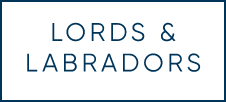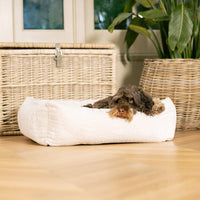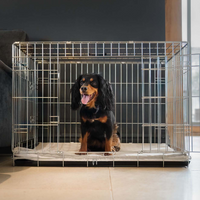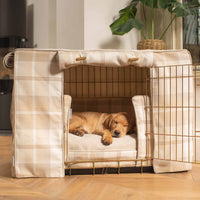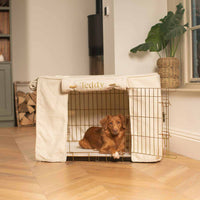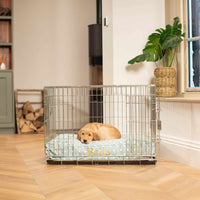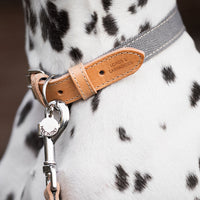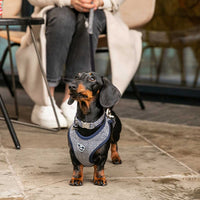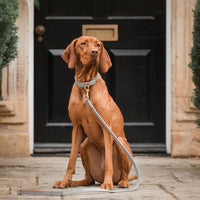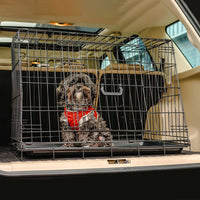Did you know that May is Walk in the Woods month? It's a time to get out and about and appreciate our local trees. It's also a brilliant opportunity to take our dogs somewhere new for their walks. Since lockdown began to ease, we’ve been enjoying more adventurous days out with our dogs. From walks on the beach to afternoons in the park, we’ve enjoyed taking any opportunity we can to enjoy the great outdoors. The woods are an exciting place to take our dogs for a walk. Woodland areas offer a range of different experiences for our canine friends including different smells and textures that they may not get to experience at their regular dog walking locations.
If you’re planning to take your dogs on a walk in the woods, there are a few things to think about to make it a day to remember for both of you. Read on to explore our tips for walking your dog safely in the woods.
Advice for Dog Walks in The Woods

Stick to paths - Many woodland areas that are suitable for dog walking have designated paths and it’s important to stick to these. The woods are alive with precious species of flora and fauna and we need to do all we can to protect them. Sticking to pathways will help protect the wildlife and also ensure you don’t get lost!
Be aware of wild animals - You may come across all kinds of wildlife on your adventures into the woods and it’s imperative that they are respected. You may come across ground-nesting birds (which often nest between March and July) or even livestock. If you do see wild animals, please don’t let your dog chase them or scare them even if you think your dog is just being playful. Pop your dog on a lead around wildlife and keep the walk pleasant for the local residents as well as your dog.
Be careful of sticks - As we all know, dogs love to play, and the excitement of being somewhere new will only make them more playful. Sticks may seem like the ideal thing to play with, but actually come with a couple of risks to your dog. It may seem harmless enough, to throw a stick for a game of fetch, but sticks can actually cause splinters in the mouth, cuts on your dog’s body and even pose a choking hazard.
We’d suggest taking one of your dog’s toys to the woods with you instead of using found objects. A dog ball, rope toy or other dog throwing toy is a brilliant addition to your travel bag for an outing to the woods.

Be aware of poisonous plants - As in any outdoor setting, you may come across plants that are poisonous to dogs. It’s probably best not to allow your dog to eat any wild plants that you come across on your walks, but you should be particularly aware of poisonous species such as Bluebells, Dog’s Mercury and Foxgloves, amongst others. Your pet may even have an allergy to a plant that is usually dog safe, so just be aware of any changes in their condition.
If you think your pet has eaten a poisonous plant, perhaps they have an adverse reaction such as vomiting, you should seek medical advice from your vet immediately.
Keep your dog on a short lead - It’s important that you have the correct lead for when on-lead walking is required. A good quality short lead (non-retractable) and matching walking accessories would be best to give you good control and to keep them close when you need to. This will be ideal if you come across areas with nesting birds or areas with livestock.
There may be times on the walk that you feel it’s safe to let your dog off the lead, and as long as they have good recall training it should be fine to let them free for a while.

If you come across other dog walkers it's best to keep your dog at heel. If you notice that their dog is on a lead, you should put your dog on a lead too. You never know at what stage of training other dogs are at, or how they react to pets that they don’t know. Be cautious and respectful at all times.
Don’t forget their treats - Make sure you bring along your dog’s treats so that you can reward their good behaviour. You may need to put their training to the test at certain times on the walk and a few treats will hopefully help to instil their manners.
Take drinking water with you - This is a must on any day out. Just like us humans, our dogs will need some refreshments during the day. Some locations may have a dog-friendly coffee shop with water bowls for dogs, but other more remote locations may not which means you’ll have to take your own. We always like to pack the car with a travel bowl and a flask of water so that we can feed our canine friends wherever we may be.
We stock a brilliant range of travel bags that come with pet travel bowls and room for your other pet travel accessories too.

Check for ticks and fleas - When you get home, make sure to check your dog for any signs of ticks and fleas. Check their whole body, feeling down to the skin. If you feel any bulges, part the fur and check for ticks. If you find a tick, remove it with tweezers pulling it away from the skin. After you’ve checked for ticks, give your dog a good comb with a fine-tooth metal comb. Rake it through your pet’s fur checking for signs of fleas on the comb. If you do find any, give your pet a good bath with a flea treatment to kill the fleas.
We’d suggest treating your dog with a Flea and Tick treatment before taking them out to keep such pests at bay. There are also some brilliant Insect repelling products such the Scruffs Snood. These are great for outdoor pursuits where insects could irritate your dog.

Remember to plan ahead - As with any post-lockdown day out, make sure you plan ahead. Many locations remain closed or with some restrictions still in place. Ensure you know what the rules and regulations are at the place that you're visiting, and take any provisions that you'll need to help you stick to them.
Wherever your dog walks take you, we hope you enjoy your adventures with your canine companions. Hopefully we've given you plenty of helpful advice to keep your outdoor exercise fun for everyone whilst keeping you safe too. If you need any more advice in terms of certain health conditions and risks, you can always chat to your vet who will be happy to give you advice tailored to your specific dog.
